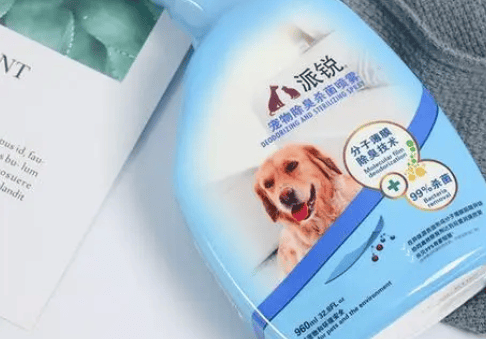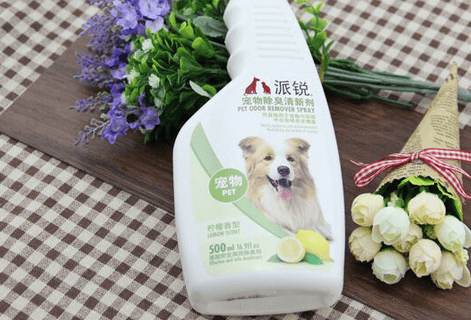Keeping a pet is a high-quality emotional experience for us, which is why more and more people are keeping pets such as dogs and cats. They accompany us, like family, filling more emotional needs in our hearts. However, in life, we still face some problems because of raising pets.

1. Good for the human body Health Threats Pets pose direct or indirect hazards to human health, and their transmission routes include: direct transmission of zoonotic diseases as a source of infection: transmission of zoonotic diseases through direct contact (such as skin, mucous membranes, conjunctiva, digestive tract and respiratory tract) Diseases include rabies, anthrax, tuberculosis, hemorrhagic fever, leptospirosis, cat scratch disease, toxoplasmosis, fungi, etc. As a host for the growth and reproduction of pathogens, it completes the spread of zoonotic diseases: after the pathogens complete the necessary development stages in pets or multiply to a certain number, they make people sick through contact with human skin. Such diseases include plague and lymphocytic leukemia. Meningitis, clonorchiasis, babesiosis, etc. Zoonotic diseases caused by contamination of pet excrement: hair loss, sloughing, and open excrement on pets contaminate vegetables, food, and drinking water. People can become infected after ingestion. Such diseases include atopic dermatitis and allergic asthma. , psittacosis and intestinal diseases, etc. 2. Cross-infection of pet epidemic diseases There are many pet epidemic diseases, such as canine distemper, canine parvovirus, feline distemper, etc. In pet hospitals, beauty shops, and dog and cat kennels, where pets are densely packed, cross-infection is most likely to occur. Both the owner and the pet have established a very good relationship. Once they fall ill, it will cause both financial and emotional losses. 3. Deterioration of the quality of the living environment. The unique body odor and excrement of pets will also cause the deterioration of the quality of the living environment to a certain extent, and the air will smell unpleasant. Especially if there are more than 3-5 dogs, it is even more serious, and it is easy for relatives, friends and customers to avoid it. Pet Disinfection
Although there are many worries, the emotional sustenance and happiness that pets bring to their families have led to more and more families raising pets. Therefore, disinfection of pets has become very important. During the disinfection process, we must pay special attention to respecting the physiological characteristics of dogs and cats. Dogs naturally like to sniff everywhere. When dogs lower their heads and sniff everywhere in the home, they will come into very close contact with disinfectants. When pets sniff, irritating disinfectants are easily inhaled into the alveoli, which can cause chronic damage to dogs. Cats love to lick their hair, and the disinfectant ingredients on their bodies may be licked. Unlike us humans, they choose to stay away from harmful disinfectants, so dogs and cats have higher requirements for disinfectants than people. In view of this, it is recommended not to use highly irritating disinfectants such as 84, peracetic acid, and pentylene glycol for pet home disinfection. Especially puppies and cats, pregnant dogs and cats, and elderly dogs and cats should pay more attention. It is best to use green, environmentally friendly and low-irritation disinfectant. According to surveys, more than 70% of households with pets currently disinfect regularly, which also shows that many pet owners are gradually increasing their awareness of disinfection.

Thus, we It can be seen that many disinfectants used daily are not suitable for households with pets. So, what should families with pets use to disinfect? 1. Chlorine preparations: Chlorine-containing disinfectants refer to disinfectants that dissolve in water to produce hypochlorous acid with microbial killing activity. Such disinfectants include inorganic chlorine compounds, such as 84 disinfectant, sodium hypochlorite, bleaching powder, bleaching powder essence (mainly calcium hypochlorite), trisodium chloride phosphate; organic chlorine compounds, such as sodium dichloroisocyanurate, trichloride Sodium isocyanurate, ammonium chloride T, etc. The most common one is 84 disinfectant, which is irritating and corrosive to a certain extent. 84 disinfectant has strong bleaching effect and corrosiveness, which will increase the concentration of chlorine in the air and cause chlorine poisoning. 2. Aldehyde disinfectants: including formaldehyde and glutaraldehyde. This type of disinfectant is an active alkylating agent that acts on the amino and hydroxyl groups in microbial proteins, thereby destroying protein molecules and killing microorganisms. The sterilization characteristic is that it is effective against bacteria, spores, fungi, and viruses, but is greatly affected by temperature. Since they can irritate and solidify human skin and mucous membranes, and can cause sensitization, they cannot be used for disinfection of air, tableware, etc. Generally only used in hospitals. 3. Surfactants: including biguanide and quaternary ammonium salt disinfectants, which are cationic surfactants and have bactericidal and decontamination effects. The sterilization mechanism is to change the permeability of the cell membrane, causing the cytoplasm to leak out, hindering respiration or denaturing proteases; the sterilization characteristic is that it can kill bacterial propagules, but has poor effect on spores, fungi, viruses, and tuberculosis bacteria. 4. Phenolic preparations: For example, Dettol, whose active ingredient is p-chlorometa-xylenol, is a broad-spectrum antifungal and antibacterial agent. It can be widely used as an antifungal and antibacterial agent in clothing disinfection or personal care products. However, a clinical case study at the Nutrition Department of the Nanfang Hospital Affiliated to the First Military Medical University has confirmed that: after para-chloro-m-xylenol enters the body from the gastrointestinal tract, it can cause necrosis and shedding of esophageal and gastrointestinal mucosal cells, resulting in esophageal burns and gastrointestinal mucosal shedding. and toxic enteritis, etc. It also leads to intestinal flora imbalance in the body. Therefore there are certain risks. 4. Pet Disinfection Machine The pet disinfection machine is a machine that operates on mechanical principles to produce physical or chemical disinfection elements that act on toxic substances to achieve the purpose of disinfection. It can kill and remove pet odors, smoke smells, sweat smells, etc. Odor, fiber, planktonic mold, virus, planktonic bacteria, mites, pollen, dust, dander, toluene, xylene, total volatile organic compounds (TVOC), benzene, formaldehyde, carbon monoxide, carbon dioxide and nitrogen oxides in automobile exhaust wait.

 扫一扫微信交流
扫一扫微信交流
发布评论